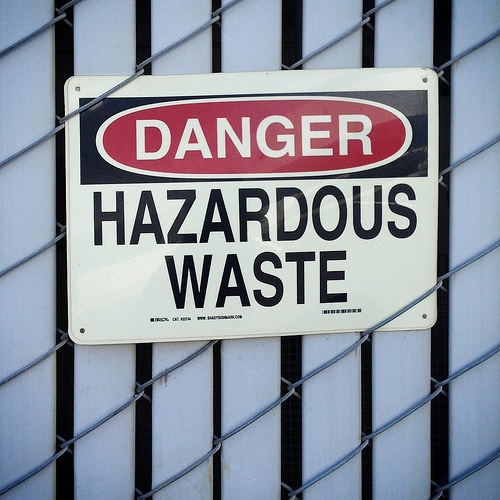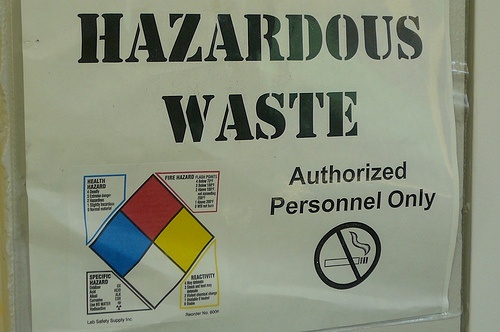The Clean Water Act (CWA) provides detailed national requirements, under which the U.S. Environmental Protection Agency (EPA) and states cooperate to establish water quality goals, and administer planning and discharge permit programs to preserve and enhance water quality nationwide. To improve the efficiency of these massive efforts, EPA has launched a series of initiatives to provide for electronic reporting and data management. Effective December 21, EPA has adopted extensive revisions to CWA rules to require electronic reporting instead of paper reporting under a wide variety of CWA provisions. These rules provide facilities with deadlines after 12 months (“Phase 1”) for high-priority discharger reports, and 5 years (“Phase 2”) for other discharger requirements. They also provide a series of deadlines for state regulators to share and report information electronically, ranging from 9 months to 6 years from now. EPA emphasizes that these revisions do not increase the amount of information reported by various entities, and so asserts that entities’ reporting burdens should actually diminish once they’ve managed their transition to the new methodologies. EPA also anticipates significant benefits from data sharing among agencies.
Read MoreAudit, Compliance and Risk Blog
EPA Adopts Rules For Electronic Clean Water Act Reporting
Posted by Jon Elliott on Tue, Jan 26, 2016
Tags: Health & Safety, EHS, EPA, Hazcom, Stormwater
EPA Proposes To Revise Hazardous Waste Generator Requirements–Part 2
Posted by Jon Elliott on Wed, Jan 20, 2016
Separate Summaries For Generator Categories
In September, EPA published substantial regulatory revisions (which EPA entitles collectively as the Hazardous Waste Generator Improvements Rule) to its regulation of hazardous waste generators under the Resource Conservation and Recovery Act. In Part 1 of this series of blogs (click here), I summarized the principal revisions. In this Part 2 I recast the proposal to compile changes applicable to different categories of generators:
-
“Conditionally exempt small quantity generators (CESQGs)” – which are being renamed as “very small quantity generator (VSQG)”.
-
Small quantity generators (SQGs).
-
Large quantity generators (LQGs).
What Requirements Would Apply To VSQGs?
EPA’s proposes to rename Conditionally Exempt Small Quantity Generators (CESQGs) as Very Small Quantity Generators (VSQGs), and to offer these generators additional flexibility. Eligibility for this category continues to be determine based on the following monthly waste generation volumes: Read MoreTags: Health & Safety, OSHA, EHS, EPA, Greenhouse Gas, Hazcom
EPA Proposes To Revise Hazardous Waste Generator Requirements–Part 1
Posted by Jon Elliott on Mon, Jan 18, 2016
Summary Of Proposals
The U.S. Environmental Protection Agency (EPA) has spent the last decade considering revisions to its hazardous waste management regulations (issued under federal laws generally referred to as the Resource Conservation and Recovery Act (RCRA)), exploring opportunities to clarify and simplify the text of the regulations and the actions necessary for compliance. In September, EPA published substantial regulatory revisions (which EPA entitles collectively as the Hazardous Waste Generator Improvements Rule) in the Federal Register; comments were due by December 24, after which EPA will decide whether to finalize the changes. EPA calculates that these proposals will include more than 60 changes to specific requirements, and more than 30 additional technical clarifications and corrections. These revisions would clarify some existing provisions, remove some longstanding requirements, and also add some additional new requirements. Some requirements apply to nearly all generators, while others are targeted at one or more of three volume-based tiers.
Read MoreTags: Health & Safety, OSHA, EHS, EPA, Hazcom
New Year’s resolutions are all about improving yourself and being the best person that you can be. Most goals fit into one of three categories: personal success (money), priorities (family) and health. Let me show you how focussing on kindness to others, reducing material excesses and embracing your local neighbourhood can play a part in some of the best green resolutions. There are ways to live gently on the earth, while saving dollars and expressing your gratitude for all that you have, by giving back to your community and setting green goals for the year.
Read MoreTags: EHS
Over the past two decades, society has grown increasingly conscious of pollution’s particular impacts on communities with minority and/or low-income populations. Awareness that these communities seem to bear a disproportionate amount of adverse health and environmental effects led to the multi-agency establishment of the National Environmental Justice Advisory Council in 1993 and issuance of Executive Order (EO) 12898 in 1994, Federal Actions to Address Environmental Justice in Minority Populations and Low-Income Populations. Since then, EPA, as the primary federal agency responsible for protecting human health and the environment, has taken a lead role in helping other federal agencies implement the EO.
Read MoreOSHA Proposes to Revise Safety and Health Program Guidelines
Posted by Jon Elliott on Tue, Dec 08, 2015
In 1989 OSHA issued “Safety and Health Program Management Guidelines” (S&H Guidelines), recommending activities employers should undertake to ensure their employees’ safety and health. The S&H Program Guidelines encourage employers to institute and maintain an “effective occupational safety and health program.” Some state occupational safety and health regulators have used these (voluntary) guidelines as the basis for mandatory employer programs – including California’s Injury and Illness Prevention Program (IIPP) requirement and Washington’s Accident Prevention Program (APP) requirement. OSHA proposed a national rule in 2012, but after several delays has designated it a “long term action.”
Read MoreTags: Employer Best Practices, Health & Safety, OSHA, Employee Rights, EHS
It takes time to stand in the bookstore and figure out which books will make suitable gifts for the little people in your life. Some book covers masquerade as educational and enriching, but when you open them up, they are vapid and do not offer any challenging material, nor new thoughts to open up a child’s mind. If you are looking for books that introduce environmental themes and get kids thinking and asking the questions that matter, here is what I can recommend:
Read MoreTags: Environmental risks, Environmental, EHS
The Occupational Safety and Health Administration (OSHA) adopted massive changes to its Hazard Communication Standard (HCS or Hazcom) effective May 25, 2012, updating chemical information, labeling and training requirements that had been in place since the 1980s. These revised requirements conform U.S. requirements to international guidelines under the U.N.-sponsored Globally Harmonized System of Classification and Labeling of Chemicals (GHS). Recognizing the extent of these changes, OSHA provided multi-year compliance phase-ins for employers whose workers manufacture, distribute or use chemicals (I’ve previously blogged about the changes here, here and here). The next such deadline is December 1, 2015, when distributors must only ship containers that meet the latest labeling requirements – so if you work for an employer that’s an end user of chemicals, all containers entering your facility must meet these requirements rather than the pre-2012 requirements.
Read MoreTags: Health & Safety, OSHA, Environmental risks, Environmental, EHS, Hazcom
Hazardous Materials Commentary as Textbook for Professionals
Posted by Jon Elliott on Tue, Nov 17, 2015
 For more than 25 years, I’ve taught one of the core required courses in the Hazardous Materials Management Certificate program offered by University of California Santa Cruz Extension (UCSC-Ex). The program is intended to provide professionals with a solid foundation in the principles, regulations, and technologies required to manage hazardous materials and hazardous waste. In my course–the Regulatory Framework for Toxic and Hazardous Materials–I provide overviews of:
For more than 25 years, I’ve taught one of the core required courses in the Hazardous Materials Management Certificate program offered by University of California Santa Cruz Extension (UCSC-Ex). The program is intended to provide professionals with a solid foundation in the principles, regulations, and technologies required to manage hazardous materials and hazardous waste. In my course–the Regulatory Framework for Toxic and Hazardous Materials–I provide overviews of:
Tags: Audit Standards, Health & Safety, California Legislation, Training, Environmental risks, Environmental, EHS, Greenhouse Gas, ghg, Hazcom, mact
In recent years, VW officials have sometimes been quoted touting their “clean diesel” vehicles by paraphrasing one of their competitors—“this isn’t your grandfather’s diesel.” This month VW finally admitted to the U.S. Environmental Protection Agency (EPA) and customers worldwide that it “isn’t your regulator’s diesel” either. The company had programmed the electronics in millions of vehicles to provide false data during required emissions tests.
Tags: Health & Safety, Environmental risks, Environmental, EHS, EPA, Hazcom, CAA, Transportation









